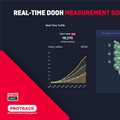#BizTrends2025: Provantage’s Jacques du Preez - OOH advertising poised for growth in SA

At home in South Africa, we’re poised to capitalise on this momentum, but there is a caveat.
This is not a simple “plug and play” scenario. Seizing this opportunity requires singular focus, collaboration and clear strategies grounded in accurate data.
It’s not just about billboards and bus stops. OOH is as multifaceted as the markets it serves.
To dominate, brands will need to be agile, creative and strategic.
Globally, three critical elements have been proven to drive OOH success:
- Reliable audience measurement
- A strong marketing lobby
- Industry consolidation.
Locally, we must focus on these to match international advancements and build a robust, sustainable future for OOH media platforms.
Reliable audience data has revolutionised OOH
In 2023, the World Out of Home Organisation launched its new Global Guidelines for Audience Measurement.
Building on the existing 2009 European Society for Opinion and Marketing Research (ESOMAR) model, the Guidelines promote sector growth worldwide by improving the value, accountability and trust in OOH everywhere and updating existing best practices for the Digital Out of Home (DOOH) era.
Globally, the availability of reliable audience data has revolutionised OOH. Brands need to know their return on investment, and robust measurement provides the credibility they demand.
Historically, South Africa has lagged somewhat in this area, relying on incomplete or outdated metrics. This is rapidly changing.
Organisations like the Out of Home Measurement Council (OMC) and international audience measurement standards like AllUnite (as harnessed by Provantage’s Protrack) are bridging the gap.
Verified data on audience reach, frequency and impact in key OOH environments like malls, transit hubs, golf courses and airports, providing certainty, allowing pre- and post-campaign planning, reporting and real-time campaign performance tracking.
Data for trends and insights
An example of the strides made is provided by Protrack real-time audience measurement statistics reflecting the growth of Mall TV Visually Adjusted Contact numbers (VAC).
In this instance, the increase in activity leading up to Christmas 2024, from 35,55 million viewed impressions in October 2024 to 48,05 million in December.
This verified data illustrates the actual seasonal shopping splurge, with trends and insights allowing for more effective campaign planning. Additionally, this is supported by verified shopper patterns.
Based on the real-time audience activity and tracking in the proximity of Mall TV screens as a cluster, averaged over December 2024, the data reflects the following:
- 9,4 average visits per shopper
- An average dwell time of 1 hour and 13 minutes
- An average of 2 minutes and 12 seconds dwell time in view of a Mall TV screen
- An average of 3,9 screens seen per shopper.
This information further empowers brands to plan and buy space on place-based networks with the same certainty they had with mediums like TV and radio.
With third-party verified data, we can shift the conversation from “great sites” to “great verified audiences”.
Consolidation is key to growth
The South African OOH landscape is fragmented, with scattered media owners fighting for market share throughout formal and informal markets.
This decentralisation hinders our ability to present a united front to advertisers, agencies and stakeholders.
Globally consolidation has been key to growth.
Fewer, stronger players create economies of scale and enable a unified industry voice. Increased standardisation, improved technology and better research and reporting have enhanced OOH market efficiency and pricing power, making it more appealing to multinational brands seeking global reach.
To further strengthen this, the Out-of-Home Measurement Council (OMC) provides credible benchmarks.
What is required however is that the OMC broaden the OOH media it measures, to include the likes of mall media, transit media and airport media among others.
Larger investments in DOOH and the ability to run campaigns across regions boost its attractiveness.
However, smaller companies face challenges competing with larger players, driving industry consolidation, which, in turn, is expected to fuel global OOH growth.
Consolidation is inevitable if we want to compete with Google and Meta. The true competition lies outside our boardrooms — not within them.
To secure adequate governance, media owners must prioritise repositioning Out of Home Media South Africa (OHMSA) – our key industry body. This begins with refinancing and recapitalising the organisation while encouraging broader membership to create a united voice.
On this, as an industry, we should foster a closer relationship between the OMC and OHMSA, to the extent that the OMC becomes the central research repository, and OHMSA that of governance and industry matters.
This, together with addressing persistent issues like illegal billboard installations and lax law enforcement, particularly in Johannesburg, is essential to strengthen the sector’s credibility and growth potential.
The explosion of retail media
WPP Group data revealed that retail media now accounts for 10.7% of global ad spend, driven by pioneers like Amazon, which reported $11.6bn in ad revenue in a single quarter.
Walmart Connect has also seen rapid growth, with sales rising nearly 30% to $3.4bn in its latest fiscal year, showcasing the increasing significance of retail media in the advertising landscape.
Globally, retail media is exploding, with 20% annual growth forecasted. South Africa’s Rainmaker and Shoprite have been quick to lead the way, showing how first-party data can transform in-store advertising into a robust revenue stream.
In the bigger picture, to keep growing, we need to educate brands and agencies about OOH’s full potential in innovative areas like retail.
Too often, OOH is misunderstood or undervalued. There’s a lingering misconception that OOH equals billboards.
In reality, it encompasses retail media, transit media, digital place-based networks and so much more.
A united marketing effort can highlight how OOH delivers unmatched frequency, dwell time and engagement compared to digital and social platforms.
With privacy concerns and ad fraud plaguing online media, the reliability and transparency of OOH are the next big thing.
The decline of traditional media and the rise of OOH
Television and other traditional advertising platforms are facing significant declines globally as audience behaviour shifts towards digital and out-of-home engagements.
Linear TV ad spend is expected to drop by 5% annually over the next few years, driven by audience fragmentation and the rise of streaming platforms. By contrast, OOH’s ability to engage audiences in public spaces positions it as a more resilient and impactful medium.
Digitisation and Programmatic
Digital out-of-home (DOOH) is gaining traction locally, with more roadside boards and place-based networks launching each month. Globally, programmatic buying is reshaping how brands approach OOH.
In South Africa, programmatic accounts for just 5% of spend but is set to grow significantly. Programmatic platforms allow brands to buy audiences, not just sites, and precisely deliver targeted campaigns.
With absolute precision delivered by artificial intelligence, the face of advertising has undergone a monumental shift, which requires a mindset change.
Brands no longer buy individual sites; they buy data-driven audience profiles. By embracing programmatic and leveraging our growing measurement capabilities, OOH can secure a larger share of advertising budgets.
Creativity and innovation
OOH’s creative potential is unparalleled, yet generic campaigns are often repurposed from other formats.
As an industry, we must challenge creative agencies to push boundaries. Whether it’s a static billboard or an anamorphic display, bold ideas drive attention and budget allocation.
Great creativity elevates individual campaigns and inspires others to invest in the medium.
Through OHMSA, there are opportunities to establish creative awards platforms to stimulate innovation and creativity.
Sustainability: A competitive advantage
Compared to digital channels, OOH has a lighter environmental footprint.
More than 50% of OOH revenues remain within local communities through rentals and job creation. We also play a role in providing public services like shelters and Wi-Fi through ad-funded platforms.
As brands prioritise environmental, social and governance (ESG) goals, OOH offers a compelling value proposition.
What next?
With 2024 behind us, OOH media owners can emerge with renewed confidence.
2025 marks the beginning of a transformative era for OOH in South Africa. We need a united front to unlock its full potential, investing in transparent and credible measurement systems, embracing digital and programmatic advancements and pushing creative boundaries to showcase OOH's unique strengths.
As we step into this exciting growth phase, it’s worth reflecting on the words of renowned architect and inventor Buckminster Fuller: “You never change things by fighting the existing reality. To change something, build a new model that makes the existing model obsolete”.
We are the architects of OOH's future in South Africa. Let’s be the changemakers we must be to see our industry flourish.


















































